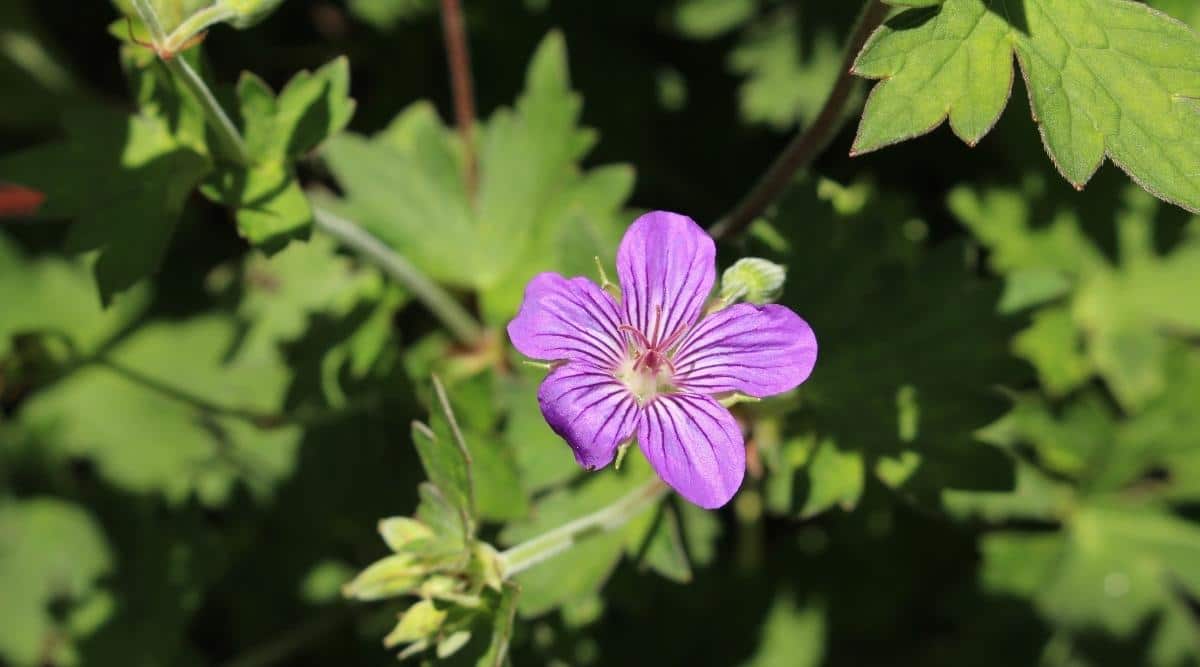navneetdalal.com – Cranesbill (Geranium), also known as hardy geranium, is a delightful perennial flower known for its delicate blooms, attractive foliage, and exceptional adaptability. With a wide range of species and cultivars available, Cranesbill is a versatile plant that thrives in a variety of garden settings, from borders and ground covers to containers and hanging baskets.
Description and Features
Cranesbill flowers are known for their five-petaled blooms that come in a variety of colors, including shades of purple, pink, blue, and white. The flowers have a simple yet elegant structure, with each petal delicately veined and often featuring a darker center. Cranesbill plants are typically low to mid-sized perennials, ranging from 12 to 18 inches in height, although some species can grow taller.
The foliage of Cranesbill is equally appealing, with rounded or deeply lobed leaves that provide excellent texture and contrast to other plants in the garden. In some varieties, the leaves may even change color in the fall, providing additional seasonal interest. The leaves are often aromatic when crushed and can add an extra dimension to a garden’s sensory experience.
Cranesbill plants generally have a spreading, mounding habit, making them an excellent choice for ground covers. Some varieties can also be trained to climb or spill over containers, adding beauty and structure to a wide range of garden spaces.
Habitat and Distribution
Native to Europe and parts of Asia, Cranesbill plants thrive in temperate climates and are found in a variety of natural habitats, including woodlands, meadows, and along streams. They are adaptable to many different soil types, from well-drained, fertile soil to poorer, sandy soils. Cranesbill prefers full sun to partial shade, making it suitable for a wide range of garden environments, from sunny borders to shaded woodland gardens.
In addition to their native habitats, Cranesbill plants are commonly cultivated in gardens and landscapes around the world. Their versatility, low maintenance, and long blooming period have made them a favorite among gardeners for many years.
Ecological Importance
Cranesbill flowers are known to attract a variety of pollinators, including bees, butterflies, and other beneficial insects. Their nectar-rich blooms provide a valuable food source for these pollinators, helping to support biodiversity in the garden.
Additionally, Cranesbill’s spreading habit makes it an excellent ground cover, helping to suppress weeds and conserve moisture in the soil. Their ability to thrive in a range of soil types and light conditions makes them valuable plants for erosion control and for filling in tricky spaces in the garden where other plants may struggle.
Cultivation and Care
Cranesbill plants are relatively easy to grow, making them a great choice for both beginners and experienced gardeners. They thrive in well-drained soil and are generally tolerant of a variety of soil types, including clay and loamy soil. While they prefer full sun, many species of Cranesbill can tolerate partial shade, making them versatile in different garden settings.
Once established, Cranesbill is quite drought-tolerant, although regular watering is beneficial, especially during dry spells. To encourage a longer blooming season, it is advisable to deadhead spent flowers regularly. Cranesbill plants are typically low-maintenance and require little more than occasional pruning and division to keep them healthy and vigorous.
For propagation, Cranesbill can be grown from seeds, cuttings, or by dividing established clumps. When divided, it is best to do so in the early spring or fall, ensuring that each division has healthy roots and foliage.
Symbolism and Cultural Significance
In the language of flowers, Cranesbill is often associated with healing and protection, given its long history of medicinal use in traditional herbal remedies. Some cultures have used Cranesbill plants to treat wounds, digestive issues, and respiratory ailments, further enhancing the plant’s symbolic meaning of resilience and strength.
In addition to its medicinal significance, Cranesbill flowers have also been seen as a symbol of simplicity and grace. Their understated beauty makes them a charming addition to any garden, symbolizing elegance in even the most unassuming forms.
Conclusion
Cranesbill is a versatile, beautiful, and hardy perennial that brings color, texture, and ecological benefits to any garden. With its charming blooms, attractive foliage, and ease of care, Cranesbill is an excellent choice for gardeners looking to add a touch of elegance and a wealth of benefits to their landscapes. Whether used as a ground cover, border plant, or in containers, Cranesbill continues to captivate gardeners with its resilience and natural beauty.
